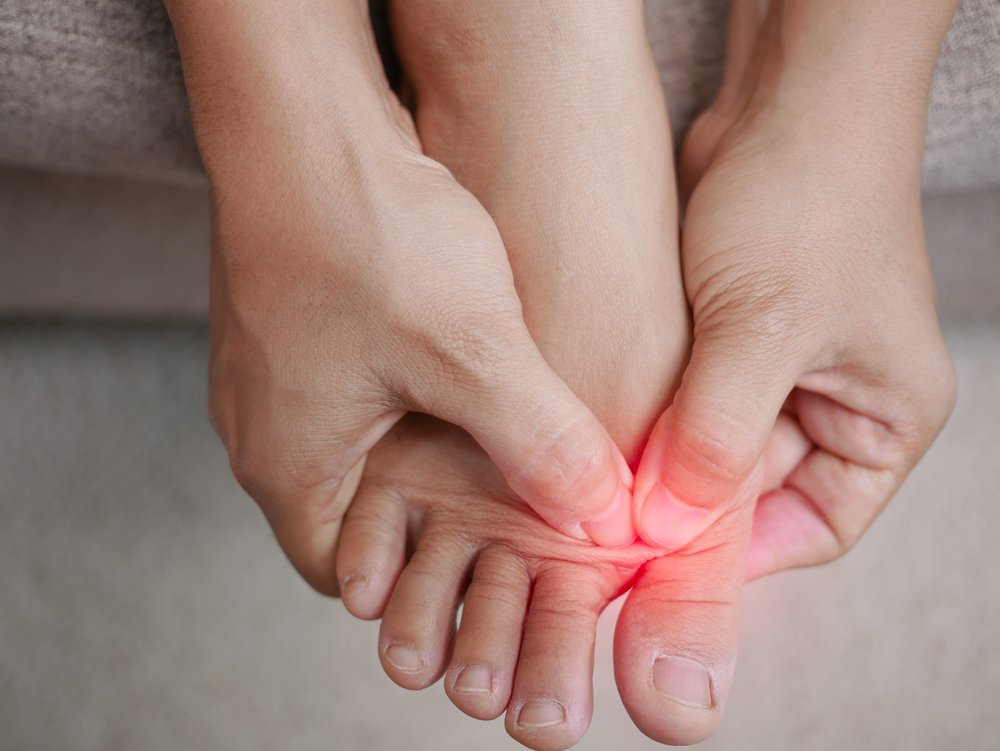
What Is A Bunion?
A bunion is an enlargement of the big toe joint that causes the big toe to angle inward toward the other toes. A bunion occurs when your big toe joint leans towards the second toe, eventually causing a deformity. Bunions can be caused by genetics, foot injuries, wearing tight or uncomfortable shoes, or other medical conditions such as arthritis. Bunions can be extremely painful and can eventually lead to pain in your entire foot.
What Causes Bunions?
Bunions are caused by a variety of factors including genetics, wearing tight or uncomfortable shoes, foot injuries, and other medical conditions such as arthritis. Wearing ill-fitting shoes can put pressure on the big toe joint which forces the toe to angle inward towards the other toes, causing bunions over time. In addition, if you have any sort of foot injury, such as a broken bone or tear in the tendon, this can cause you to develop bunions. Lastly, if you have arthritis or any other medical condition that affects the muscles and joints in your feet, this could lead to bunions.
How Can I Reduce My Bunion Pain?
There are several ways to reduce bunion pain:
- 1. Wear comfortable, roomy shoes that fit properly and don’t put too much pressure on your feet. Make sure you have a half inch to an inch of space between the top of your toes and the end of the shoe. Avoid high heels if possible.
- 2. Try over-the-counter orthotics or gel pads to cushion the bunions and reduce and manage bunion pain.
- 3. Use ice packs to reduce inflammation. Wrap an ice pack in a towel and apply it to the bunion for 15-20 minutes several times a day.
- 4. Take anti-inflammatory medications such as ibuprofen or naproxen to reduce pain and swelling.
- 5. Talk to your doctor about getting a corticosteroid injection, which can be used to reduce inflammation and relieve pain in the bunion area.
- 6. Lastly, if your bunion is causing severe pain or affecting your mobility, speak to your doctor about surgical options to correct the deformity
Where Can I Get Treatment for Bunions?
If you are concerned about bunions, it is best to consult with a podiatrist, orthopedic specialist, or foot and ankle surgeons. They will be able to assess your situation and suggest the most appropriate treatment option for you. Your doctor may recommend conservative treatments such as wearing special shoes, using over-the-counter orthotics or gel pads, applying ice packs or taking anti-inflammatory medications, or they may suggest a more invasive option such as a corticosteroid injection or surgical procedure.
What Are The Effects Of Not Treating a Bunion?
If you don’t take care of a bunion, the condition can worsen over time and cause extreme pain and discomfort. Your big toe may become increasingly more misaligned, leading to joint instability and difficulty in walking. You may also develop calluses on your feet due to the increased pressure from having bunions. Not treating a bunion can also lead to arthritis in the affected joint as well as other foot deformities. It is important not to put off taking care of your bunion; if you are experiencing any pain or discomfort in your feet, make an appointment with your doctor immediately to determine the best treatment option for you.
What Does Bunion Surgery Entail?
Bunion surgery is a procedure used to correct the deformity caused by bunions. The goal of the surgery is to realign the joint and remove any excess bone or tissue that may be causing pain or discomfort. During this procedure, your doctor will make an incision over the bunion area and then move the affected bones into their proper place before securing them with screws, pins, or wires. Aftercare following bunion surgery will involve wearing a special boot or cast for several weeks in order to protect the operated area while it heals. You may also need physical therapy in order to regain strength and flexibility in your foot.
Bunion Recovery
The recovery process following bunion surgery can take anywhere from four to six weeks, depending on the severity of your condition. During this time, it is important to follow all of your doctor’s instructions for aftercare including wearing a special boot or cast and doing any prescribed physical therapy exercises. It is also important to keep your foot elevated as much as possible and avoid putting too much pressure on the operated area in order to help speed up the healing process. With proper care and treatment, you should be able to regain full use of your foot without experiencing any pain or discomfort.
If you are struggling with a bunion or are looking into bunion surgery, contact our board-certified foot and ankle specialist Dr. Ed Davis at South Texas Podiatry or schedule an appointment on our website today.

